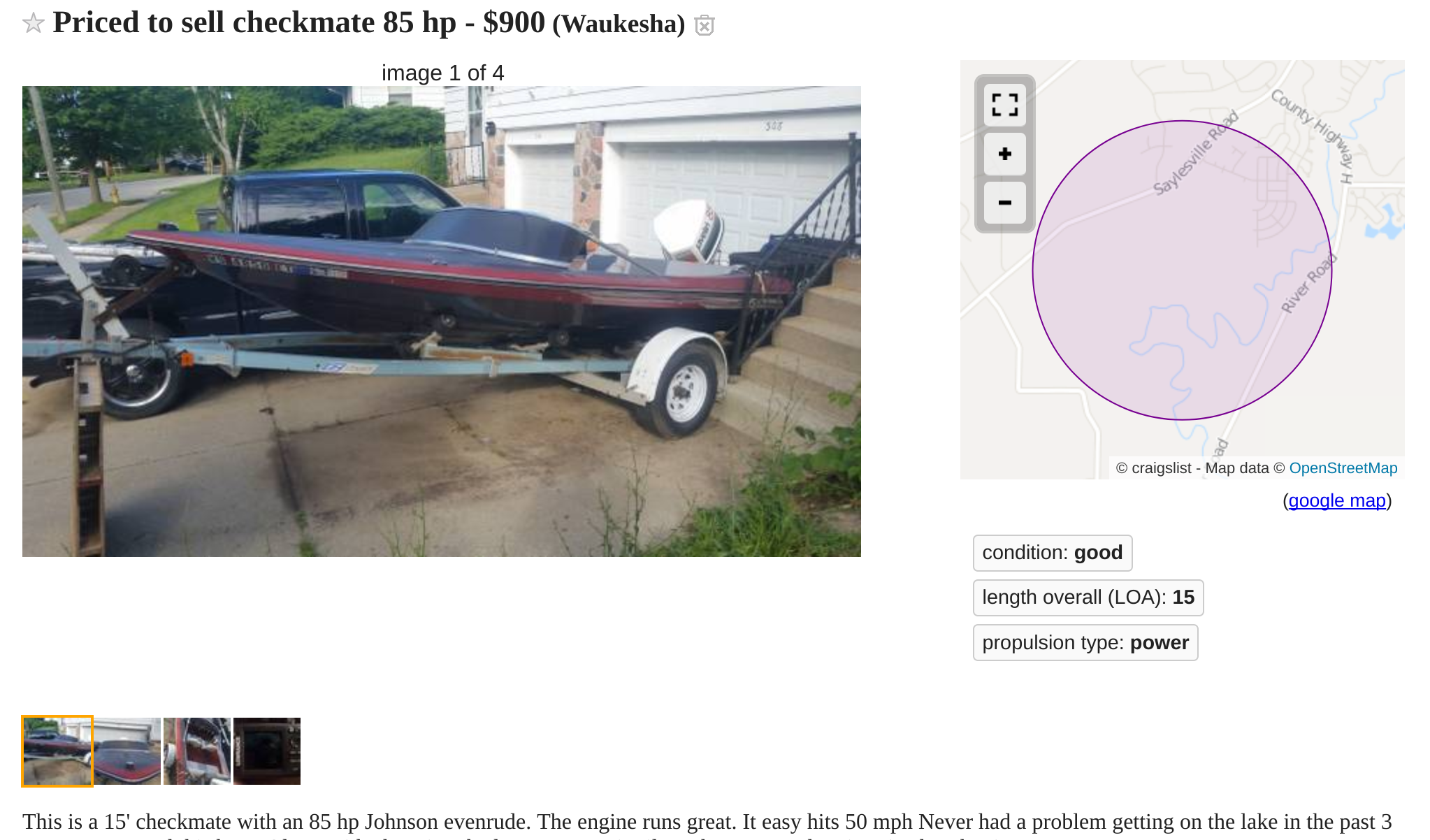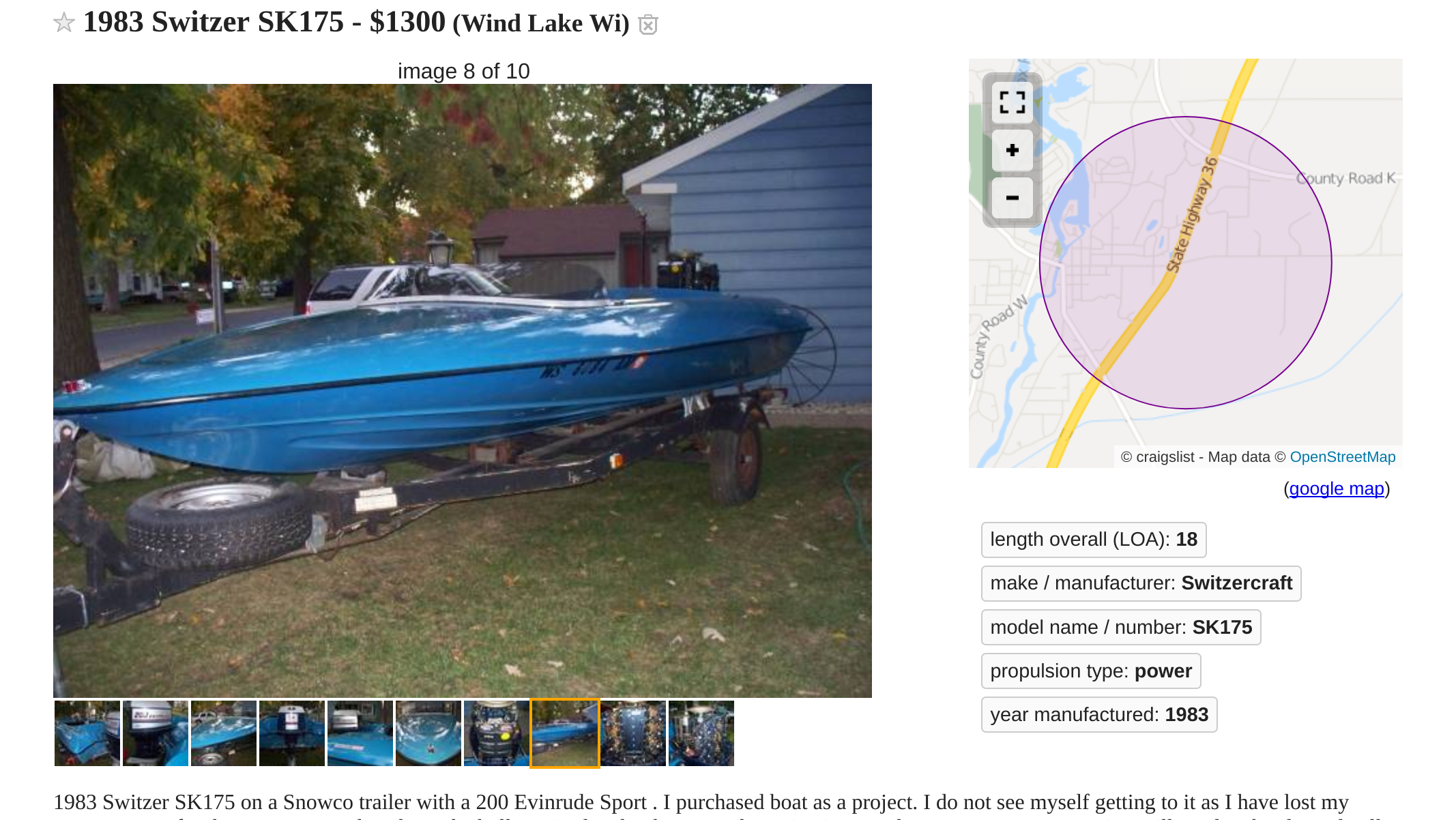Boating on the Cheap: Restoration Ideas
A few months ago we wrote an article talking about the benefits of small boats. We love small performance boats, they are economical, are easier to drive often and most of the time more fun. We were specifically talking about 15 to 18 foot performance boats. In the 70s, 80s and 90s there were so many manufacturers making boats in that size, it was a great time to be a performance boater on a budget. With that in mind and the popularity of our restoration features, we thought we would share a few suggestions and tips on what to look for and a few ideas for a good restoration.
Today it is harder to find a nice turnkey small performance boat then it was 20 years ago. We have talked about the Tuff 16 and the Sutphen 16, great boats that run great with modest power and look amazing. Because of labor costs, they aren’t as budget orientated as the small boats of the old days, still often a good deal though for overall value. In the old days, boats from Avenger, Sidewinder, Glastron, Checkmate, Baja, Hydrostream, Rapid Craft, J-craft, Allison, Eliminator, Sutphen, Laser and many more builders that have come and gone. At the time, these were made in pretty good volume, so there are still quite a few around.
One problem is they are really old but the good news is you can usually find them for free, or somewhere around $500 with a trailer. The question is, is it worth it to restore one? I would say it depends but I lean toward yes. Here’s why. Projects like this can be really fun and educational. If you have a son or daughter that is interested, even better. If you’re shopping for something in the 16 to 18 foot range but are turned off by new boat prices and want something cooler, then yes restoring is a good option. I want to try and offer a few tips and ideas that can maybe help save some money and have a fun boat in the end.
Hydrostream of Minnesota, made many boats in the 15 to 17' foot range. Very unique designs and very fast. Quality was not the best but they are a great starting point for a project.
Rotten
There are a few things to know about boats that are more than 25 years old, often times you’ll find ones even older. They will be rotten, almost all the boats in this category were made with wood and a chopper gun was used at some point. Even if it was built very well, time will always take it’s toll, just look at any person in their 80s; time wins always. So a couple things to think about are, how was the boat made? In general, some of the boats you’ll find will have a “cored” hull, this is important because you may have to redo the core and it will be a pain in the ass. Coring back then is at best balsa or possibly thin plywood. Some of the boats are not cored, and that has that one advantage when it comes to the complexity of the restoration and the time it will take. You’ll have to find a boat and research that particular hull to find out. Know that if it hasn’t been restored, the transom, stringers, floor and seats will have wood that is rotten. Wood in boats rots over time, it is as simple as that. Even the boat that shines like new, often will be rotten if it is of a certain age.
Wood
You will find wood everywhere in older boats. Plan on replacing the floor, stringers and transom at the least. Some hulls were cored, which often is rotten as well.
Shine
One thing that really sets a beautiful restoration apart is the paint job or factory finish. Most of these old boats are gelcoat from the factory and many from the early days have metal flake, which is kind of cool. But, in a budget restoration, a good way to save money is to not paint the boat. If you want to paint it by all means do, it can be great and really make your boat look unbelievable but know that it will be very expensive. Even if you are planning on doing it yourself, it will take considerable time and effort and your time is worth money. The solution is to restore the factory finish as best you can. If you can restore a gelcoat that is faded and dulled, looking like a 4/10 or 5/10 and you can turn it into a 6/10 or 7/10, you will have a very presentable boat. Sometimes, you can take a 5/10 and turn it into a 8/10. The point is, if the gelcoat is repairable, then absolutley you will save time and money there. It is a pretty fun and rewarding process detailing it as well.
Shine
If you can restore the gelcoat instead of painting, it will save you serious time and money. An old Checkmate after a metal flake restore. It was faded and dull before.
Wood
For the record, I am not a fan of wood in boats. Todays materials and technology make wood basically obsolete in modern boat building. Almost all the old boats we are talking about here used wood originally. When it comes to restoring, you have to make the call based on your budget and access to materials. Wood can be done with care, sealed properly and have a good result. We are talking about marine plywood, or woods like baltic birch, common for transoms. The advantage of going with more modern materials, closed cell composites and prefabricated composite panels like Coosa, is that they are stronger and lighter when used correctly. And they don’t absorb water. In a small boat, the cost increase is not significant.
Transom
The transom and stringers are the key structural components of your hull. This one is nicely reinforced with knees and gussets. Consult a professional before you proceed with these critical parts. Avoid pour in transoms, as they won't have the integrity a solid transom will.
Lightness is critical in small boats, all boats for that matter. I have seen several amateur restorations where the person used wood, overidid it and ended up building a heavy boat, then you get performance problems that you can’t correct after the fact. Whatever you choose for the structure, build it as light as you can and when you select other things like seats, hardware and accessories, look at the weight; it all adds up. On light hulls like these, 100 Lbs could be a significant percentage of the overall weight. If you’re on a tight budget and you feel more comfortable using wood, go ahead, on a small budget project it works and sometimes you can do it better than original, so it will last. Entirely up to you.
Once you have repaired your boat and it is solid, you will want to take some time to make sure the hull is true by blueprinting it. This has been covered in an article we did in August. Over time, your old hull will have been scraped, gouged, warped etc. In short, repair defects, straighten and sharpen strakes, chines and edges. A lot of boats back then were pulled from molds too soon and had hooked hulls, others just have suffered fatigue over time. Either way, the hull is critical to how you’re boat performs. Do not bother with speed coats, just make sure it is straight, sharp and clean. Here is our article on blueprinting for more.
Your hull has everything to do with how you're boat performs. Take the time to make sure it is true, clean and straight.
Rigging, Finish
Like I said before, the seats and other interior parts will probably be rotten and or water logged. The good news is you don’t have to spend too much to have great seats that look semi custom. You can rebuild and copy the orignals and have them reupholstered. Or, my suggestion is go to a popular marine supplier and find some nice bucket seats. Overtons is one supplier that always has seats on sale for a couple hundred dollars that look great and come in multiple colors and styles.
For hardware, see if you can refurbish what you have, if not, you may have to get new hardware, or look for some second hand. Some older boats had railings and dated looking hardware, think about removing them and using cleats or popups instead, if you feel it would look better. Often, the rubrail will look really bad, again you can try and clean it up to make it look way better but not a bad option is replacing it with a kit, you can get a very modern looking rubrail that can really update the boat for good value. Windshields are another piece that can look dated or be damaged. You can restore the existing one if it’s not too bad, you can replace the acrylic with clear or tinted acrylic to suit the boat, paint or powder coat the old frame. Or if the windshield looks dated, just remove it entirely. Just removing the windshield can make a boat look much cooler. Another option is to find a windshield you like on a similar size boat and swap it, I’ve seen that done before and it can look great.
Power
The best part of having a small performance boat is the efficiency. Not only are they more fun to drive, you won’t be spending a fortune at the gas pump either. Depending on your budget, plan to get a new or newer engine, you’ll see many boats with the original power that “run great” but today’s engines are more powerful and way more efficient. Most old engines are tired and their power was rated at the flywheel. And for the most part, the smaller boats can do really well with a modern 90 HP. Some guys will put 150 or 200+ HP engines on 15 or 16 foot hulls that weren’t designed for that much power and weight, if you’re not super experienced, I would urge you not to do that. Insurance is one reason, cost is another but also a light clean hull doesn’t need much power. If you have young person running the boat, even better reason to keep it around 90 HP, or maybe a 115 HP. Again, to me it is more about efficiency and the beauty of the small hulls is they’re economical. A 70 to 115 HP will be much more economical to run. You can get some great deals on engines in this class too.
If you're looking for premier power in this range, the Mercury 115 ProXS is a great option, Yamaha makes a direct competitor 115 SHO, both are lighter than the Evinrude in this class. A 90 HP Etec is the lightest in the smaller engines. Mercury Racing makes a 60 HP, 15" engine that is very cool.
On smaller boats, I am a big fan of an analogue setup; that is cable steering and a manual jackplate. It keeps costs reasonable and with a smaller outboard, it is hard to beat the feel a cable gives you, go dual cable with the proper helm and it will be great. If it’s in the budget and you have a pretty fast boat on your hands, hydraulic steering is awesome, no question. Hydraulic jack plates are amazing too, you can find second hand ones for a good deal as well. For setup, keep in mind, most of these boats ran with the engine directly on the transom with aluminum props. With modern power, raised and set back slightly, and modern stainless props, some of these boats will be way faster than original, especially if you’ve built it lighter and blueprinted the hull. As an example, a new Tuff 16 can do high 50’s with just a 60 HP four-stroke. Most of the older hulls we mentioned won’t be quite that fast but they can be close if setup right.
We did an article about gauges recently and here, another advantage going new with the engine is you can get new gauges included and factory gauges are pretty good now. You can definitely go custom on a budget though, see the article here.
Launch
To me, it is hard to put a price on a family project or a personal project like these. You can plan it out and not let the budget get out of hand. Plus you will have a really cool boat on your hands in the end. Many keep the boat forever, pass it on to their kids and it is incredibly memorable. Small boats are the most fun you can have on the water no matter how old you are. You can tow and store them easily, they are simple to maintain and are easy on fuel. Keep in mind the considerable amount of work to restore one, perhaps use an expert on some of the more technical aspects. For inspiration, checkout our restoration section. Have fun.
Our restoration features here
Looking for materials?
US Composites is a supplier of everything you need
A few boats below from our Classified Classics section that caught our eye.
These are nice clean looking fast hulls. You can easily run a 70 or 90 HP on this and have fun.
Not a bad looking little boat. Some Bajas had no core, so it could be a relatively straight forward restoration.
Very cool looking boat.
These CVXs came in 16, 18 and 20. Great looking boat, the 16 is really nice.
















